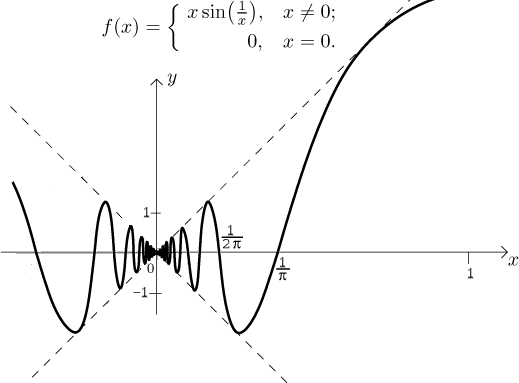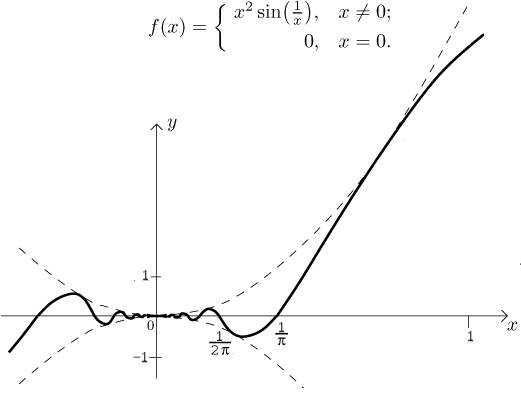This section is actually a companion to the previous section,
"saw-like" functions. We will
show functions that exhibit similar behaviour as some of the examples there,
but they will be "smooth", that is, all the examples will be differentiable
as many times as we want away from
Consider the following function:
![]()
What can we say about this function? We know that it oscillates between

Note that there are infinitely many waves, the function never stops
oscillating between
Consider the following function:

Here we still have the never ending oscillation around the origin, but now its
amplitude is modified by the term x, so it follows that this function
has limit 0 at
![]()
Consider the following function:

Again, here we have a function that is continuous everywhere and differentiable as many times as we want at non-zero points. But this time we also have a derivative at the origin, and again, reasoning is similar to that concerning the corresponding function from "saw-like" functions, but here we can actually calculate the derivative at zero quite easily using definition. Thus we have
![]()
Convince yourself by calculating the appropriate limit that this first derivative is not continuous at the origin. This shows that there exist functions that are differentiable everywhere but the resulting derivative is not continuous (cf. Derivative: basic properties in Derivatives - Theory - Introduction). However, this derivative does have the Intermediate Value Property.
Just like in the previous example we can prove that the second derivative of this function does not exist at the origin. In general, we can fix a natural number n and consider the following function:
![]()
This function is continuous on the real line, it has all derivatives at
non-zero x and it has derivative at